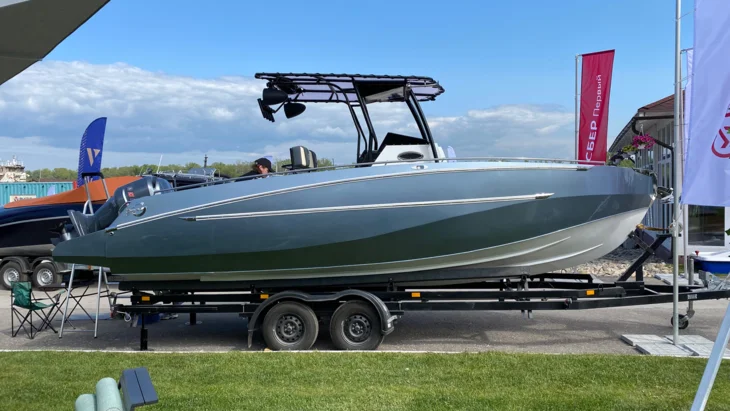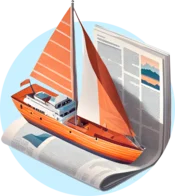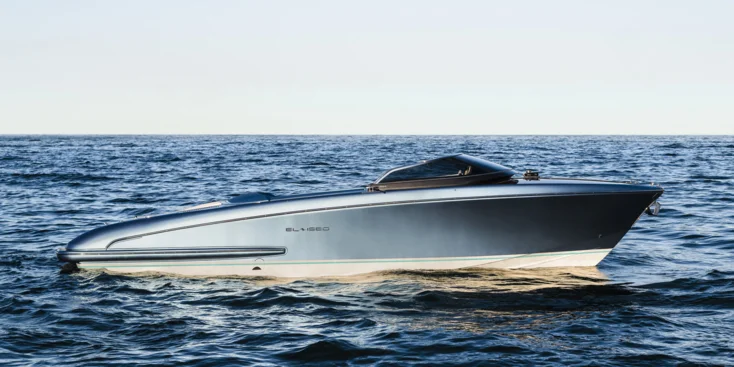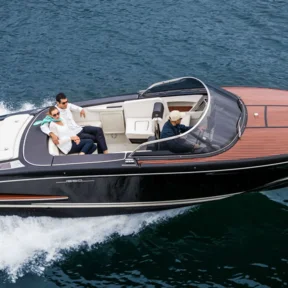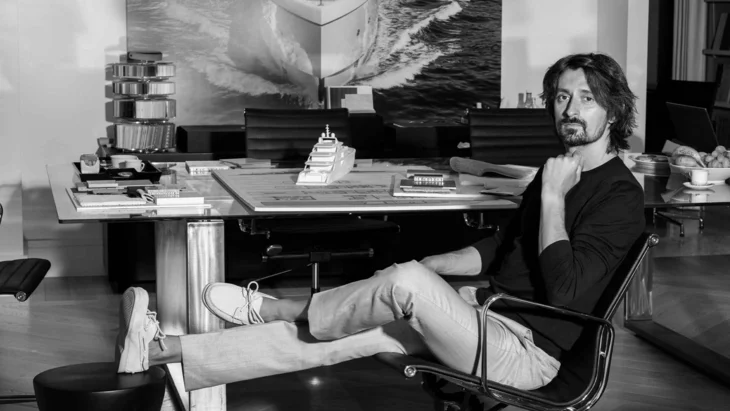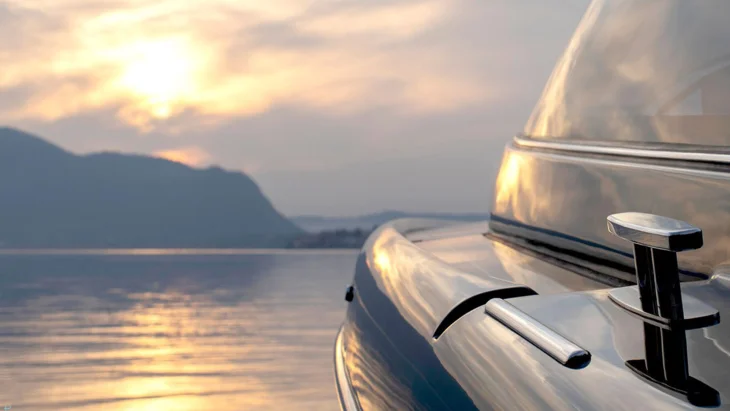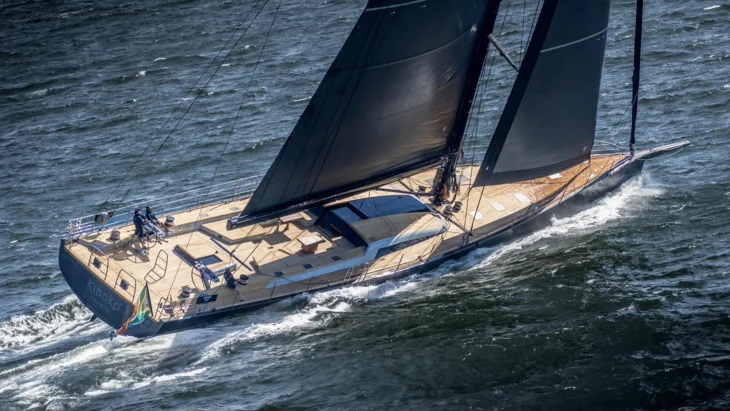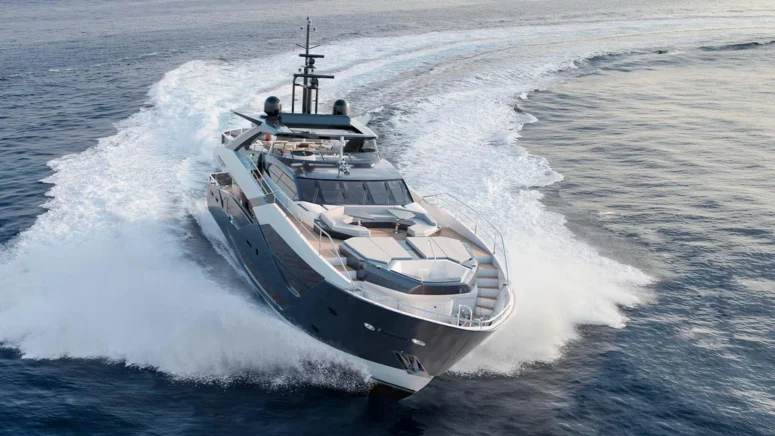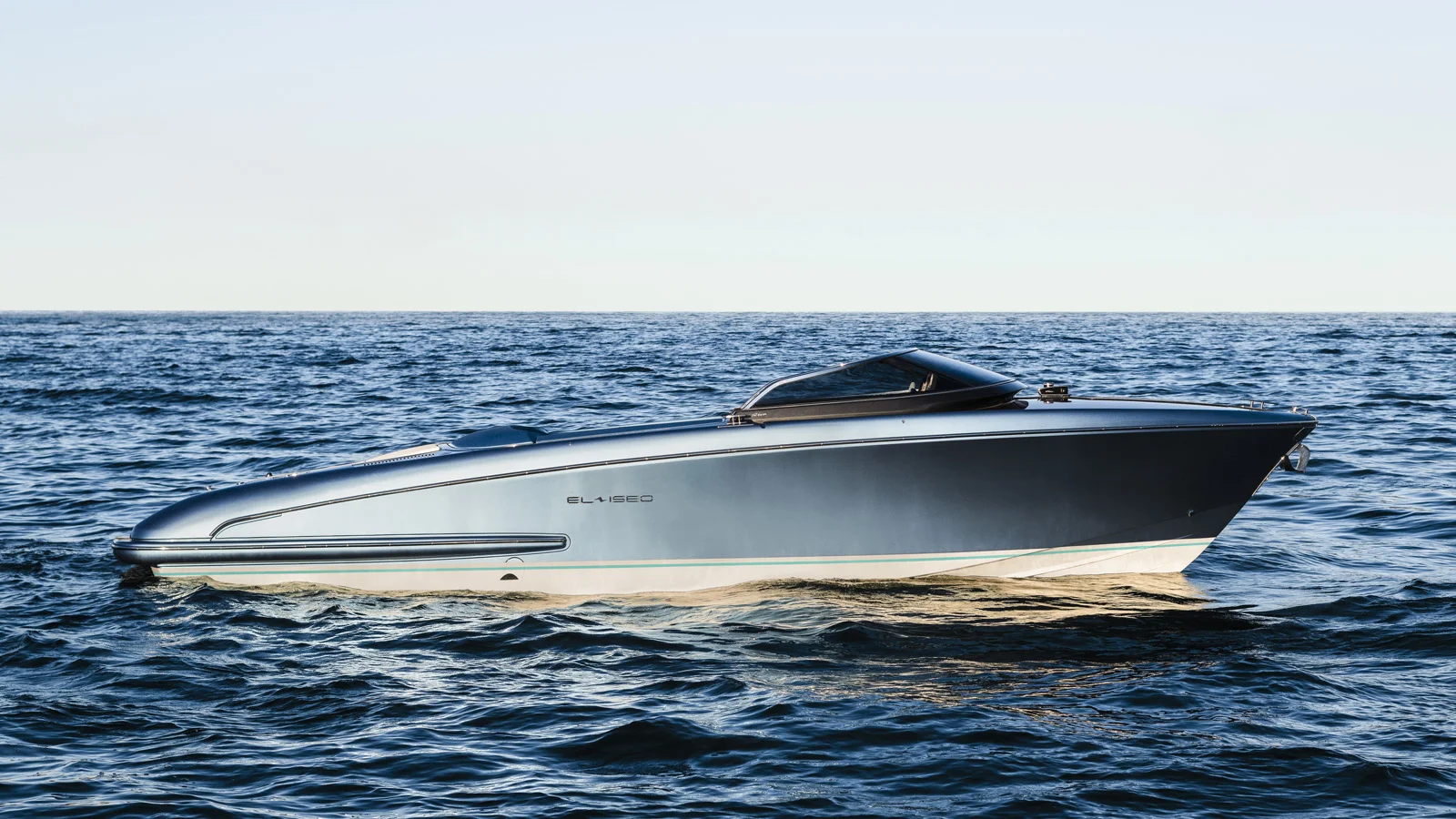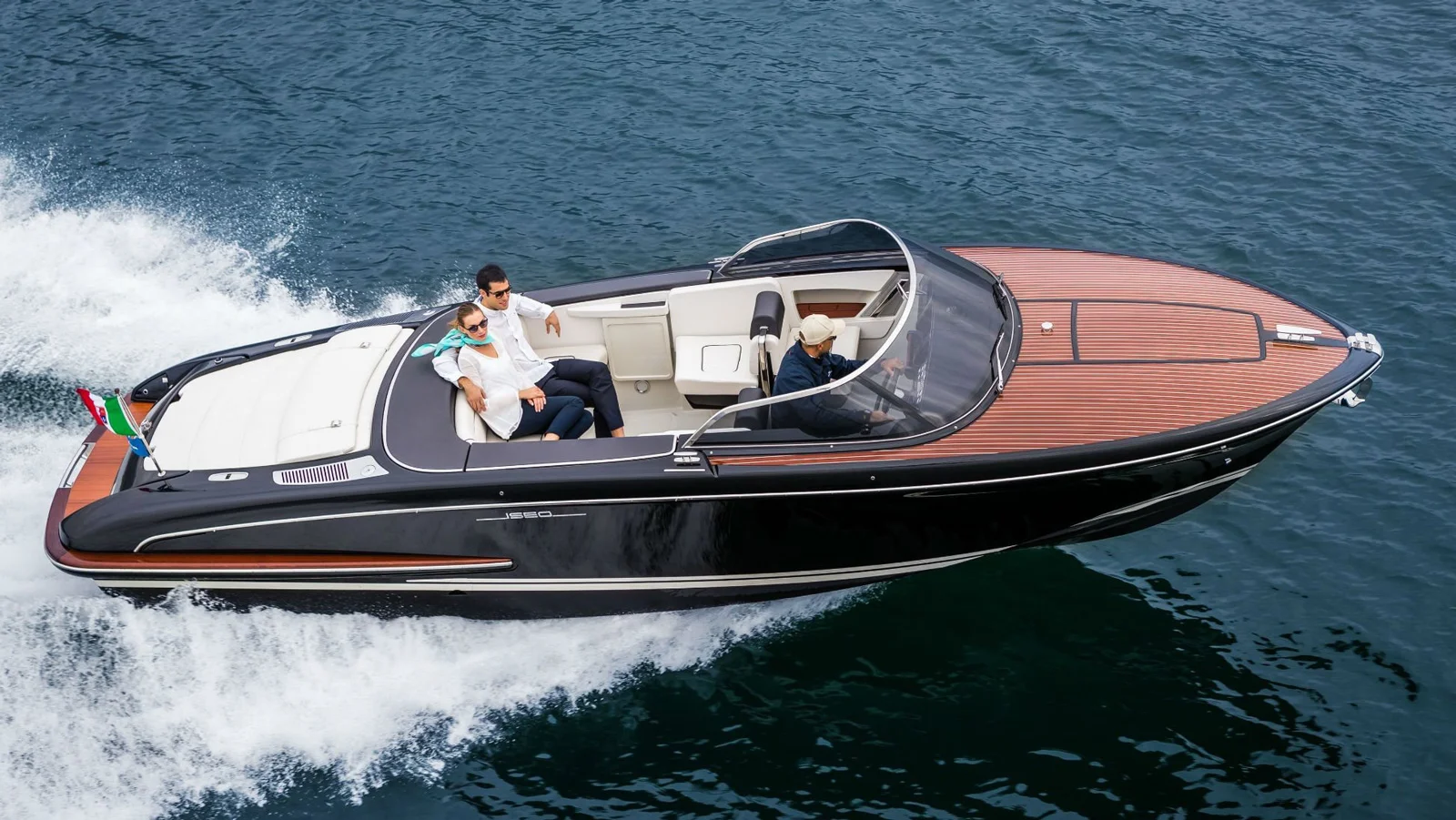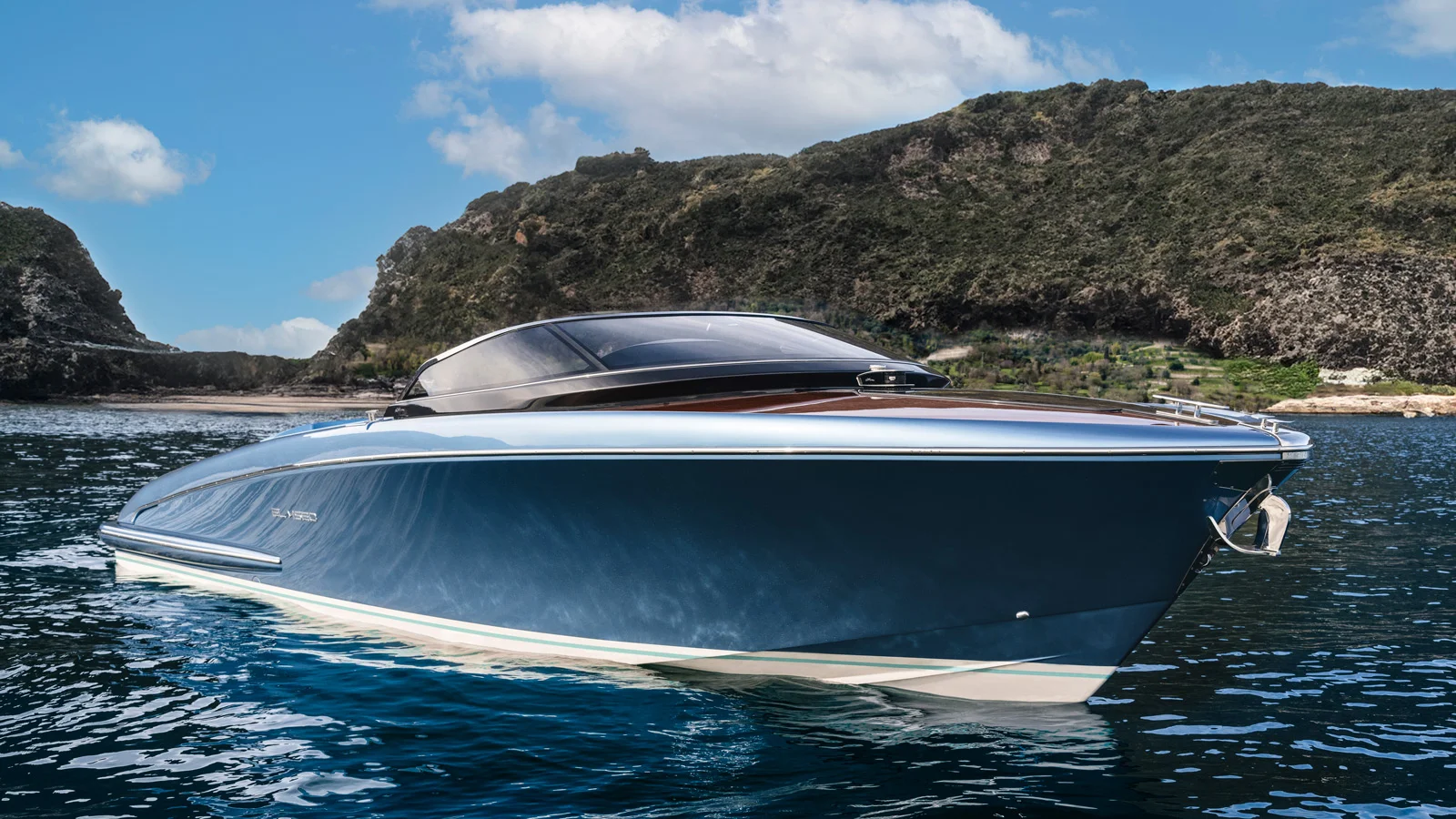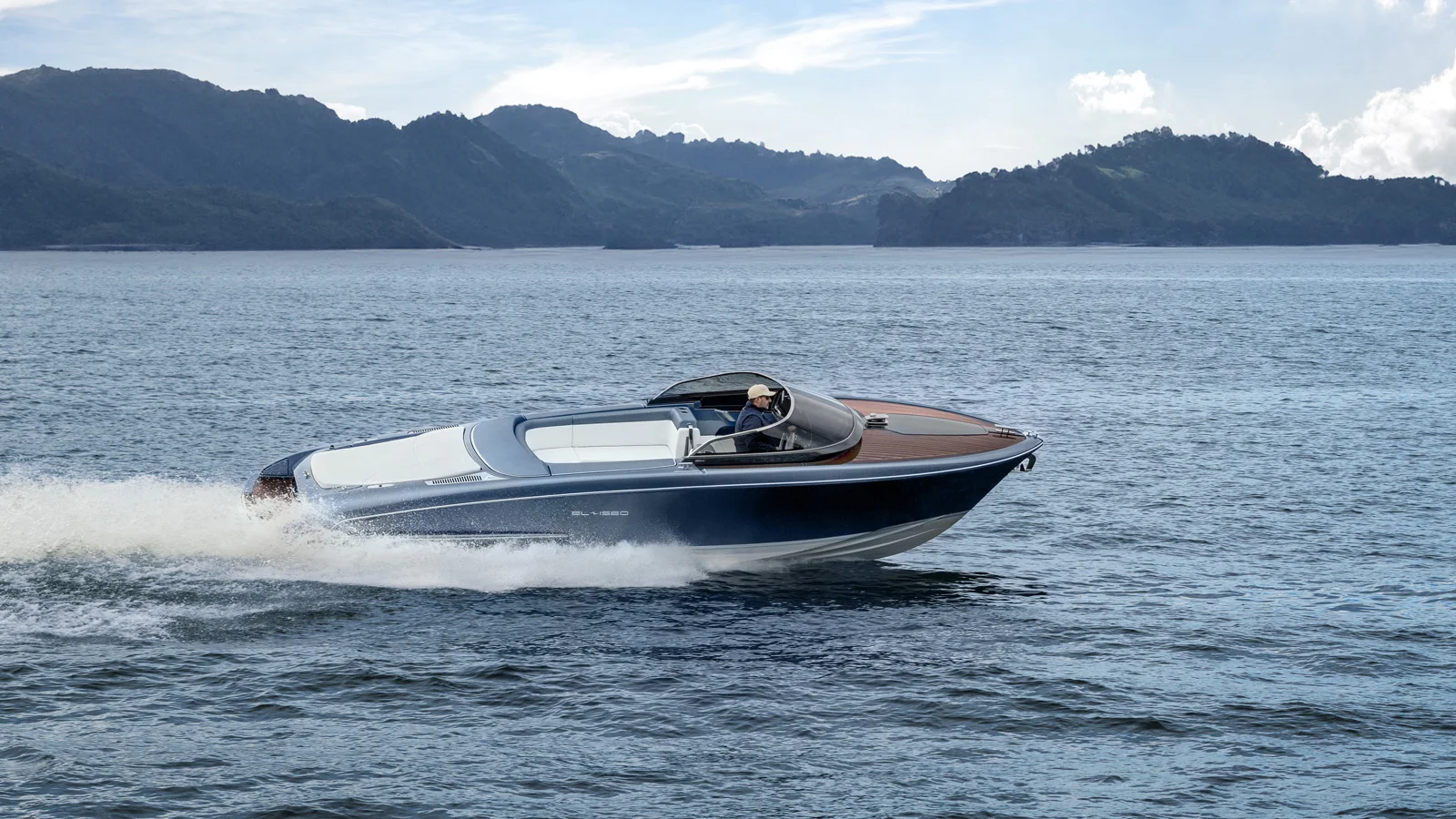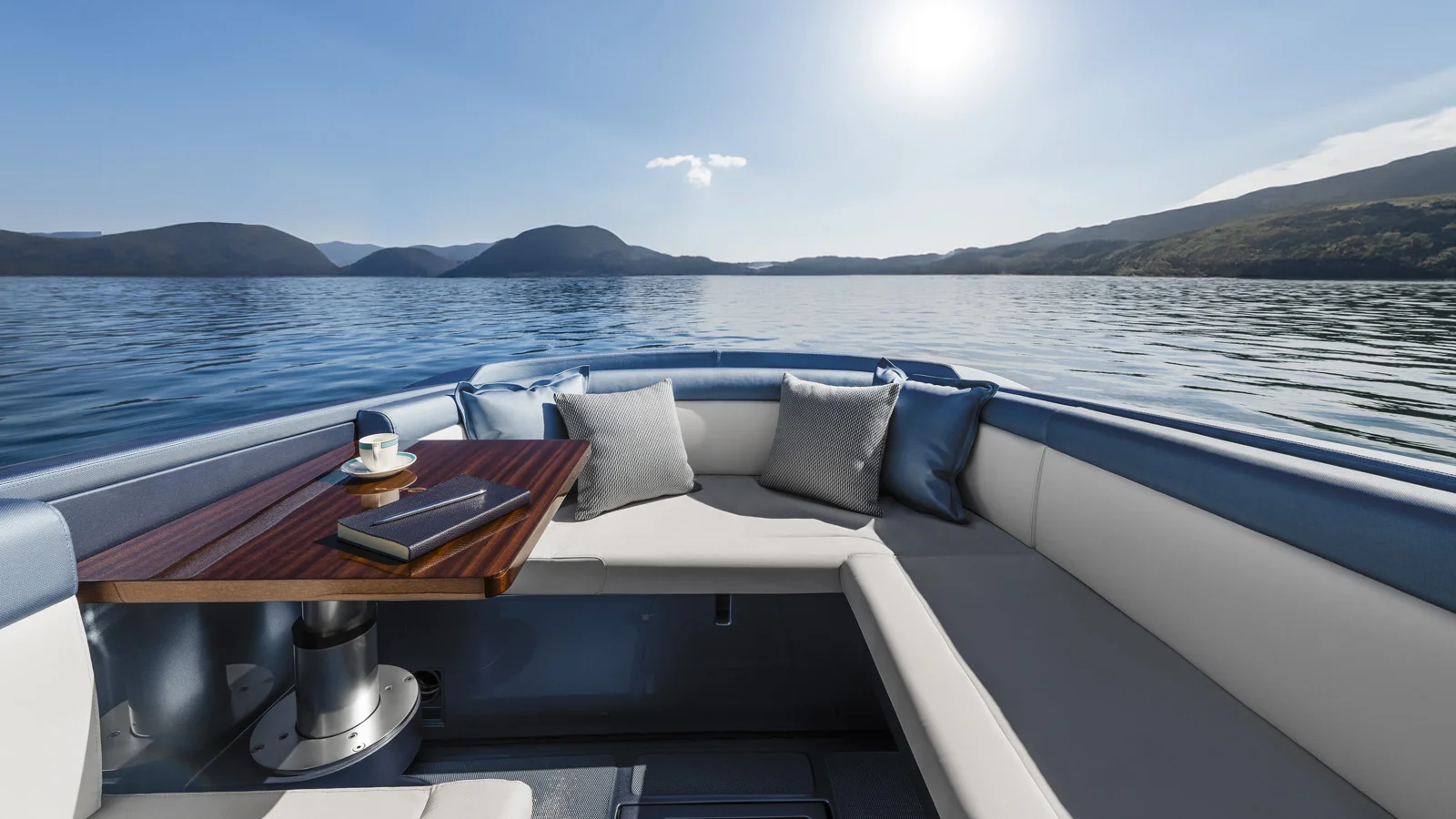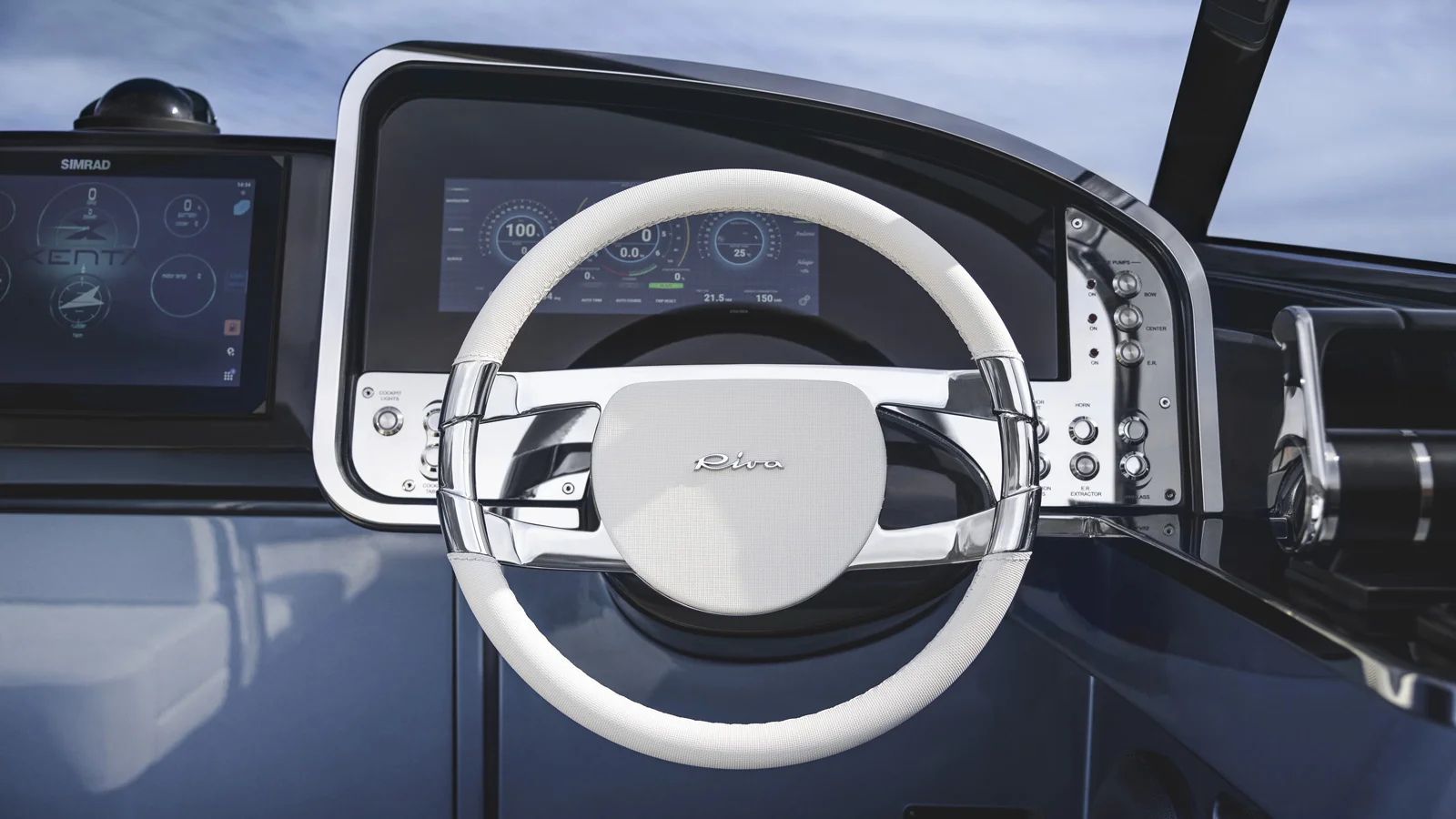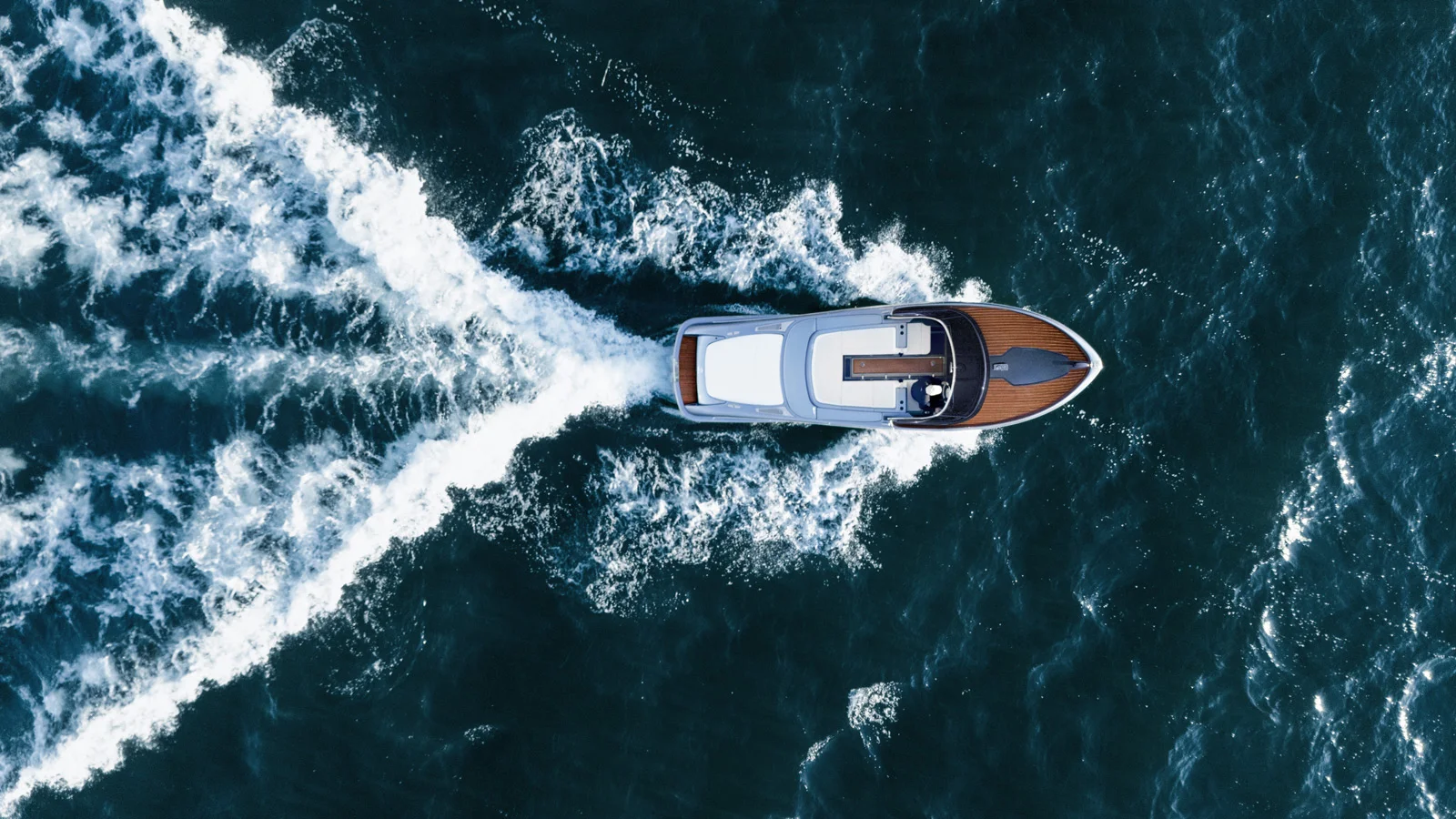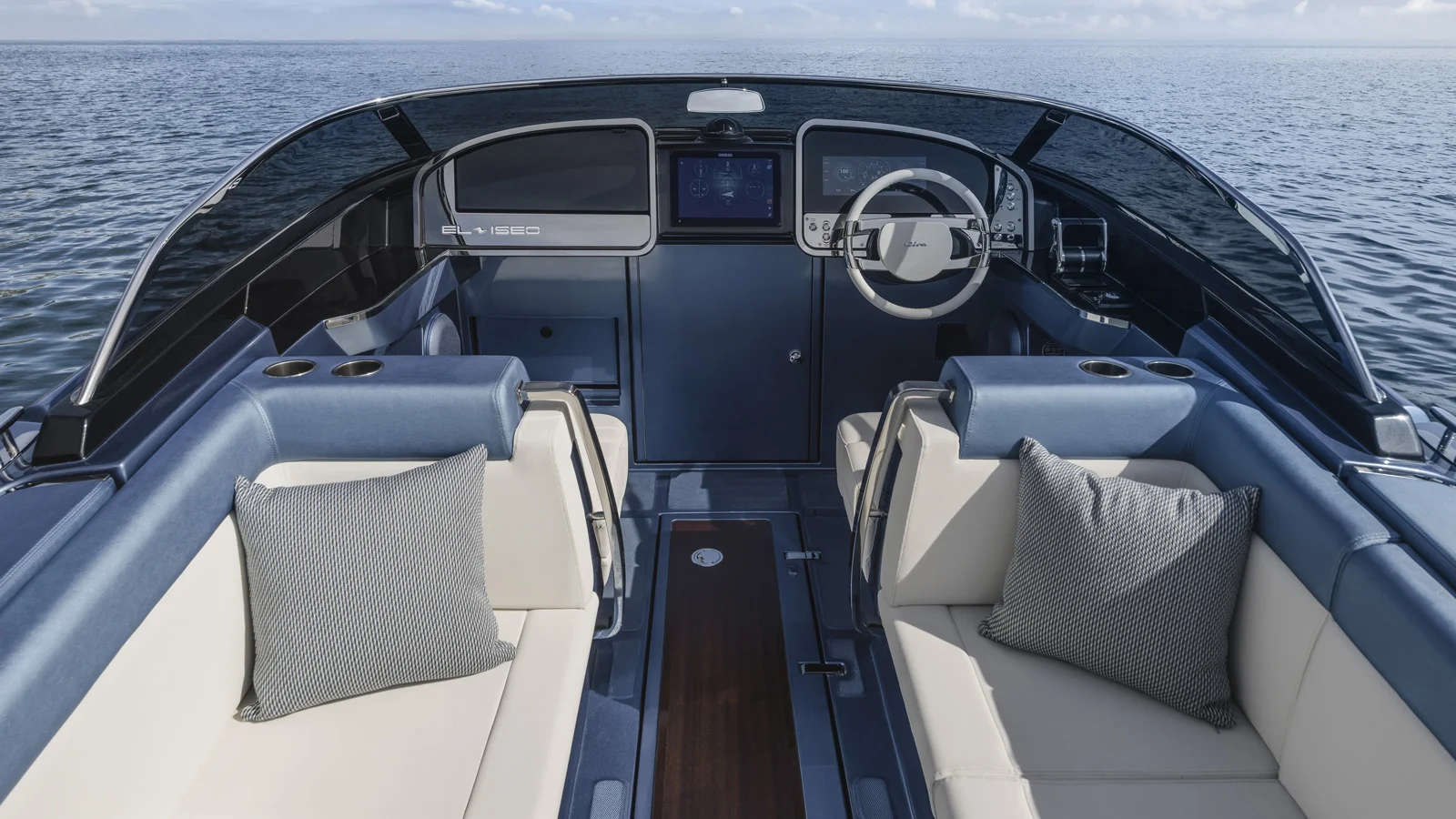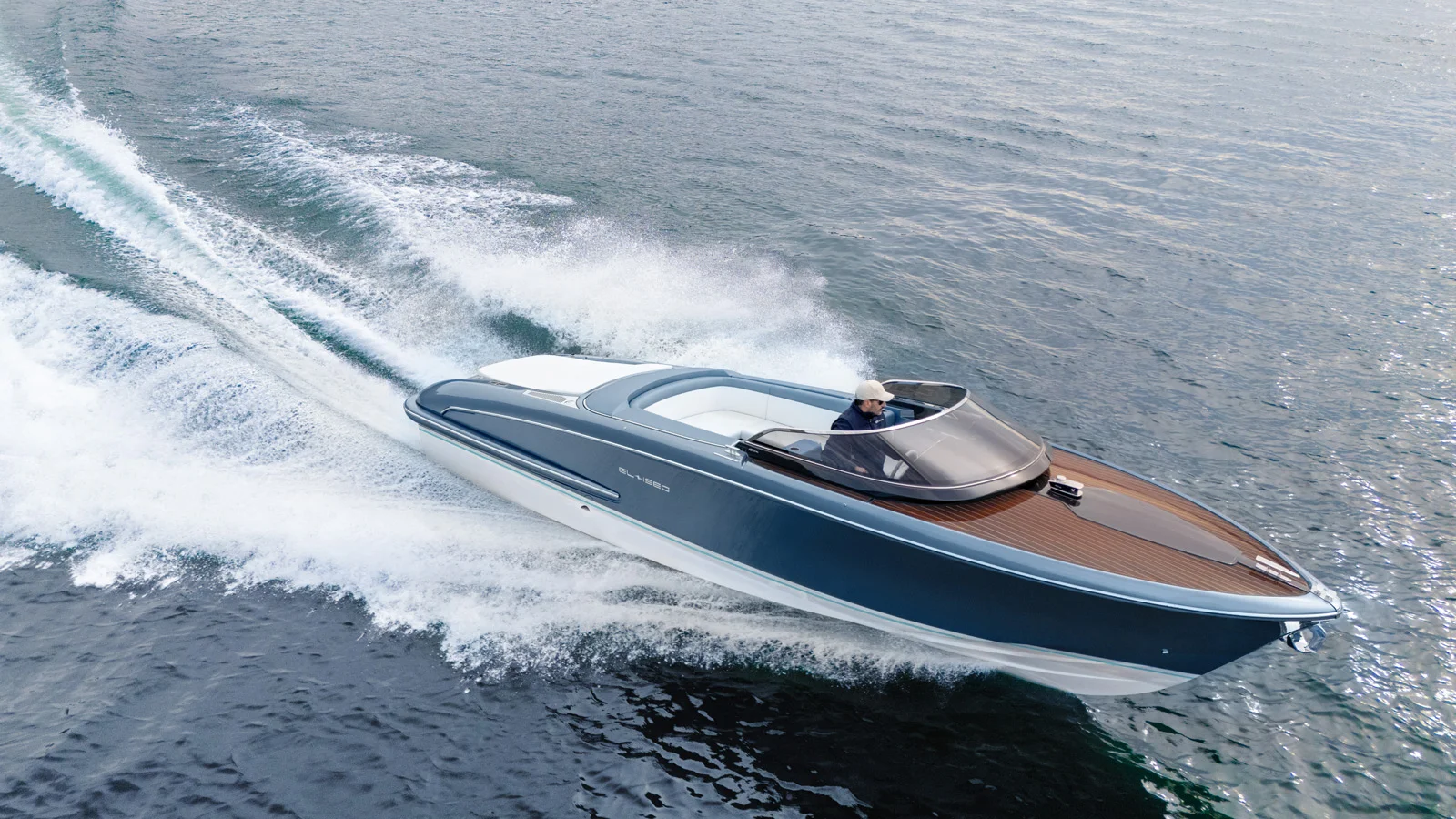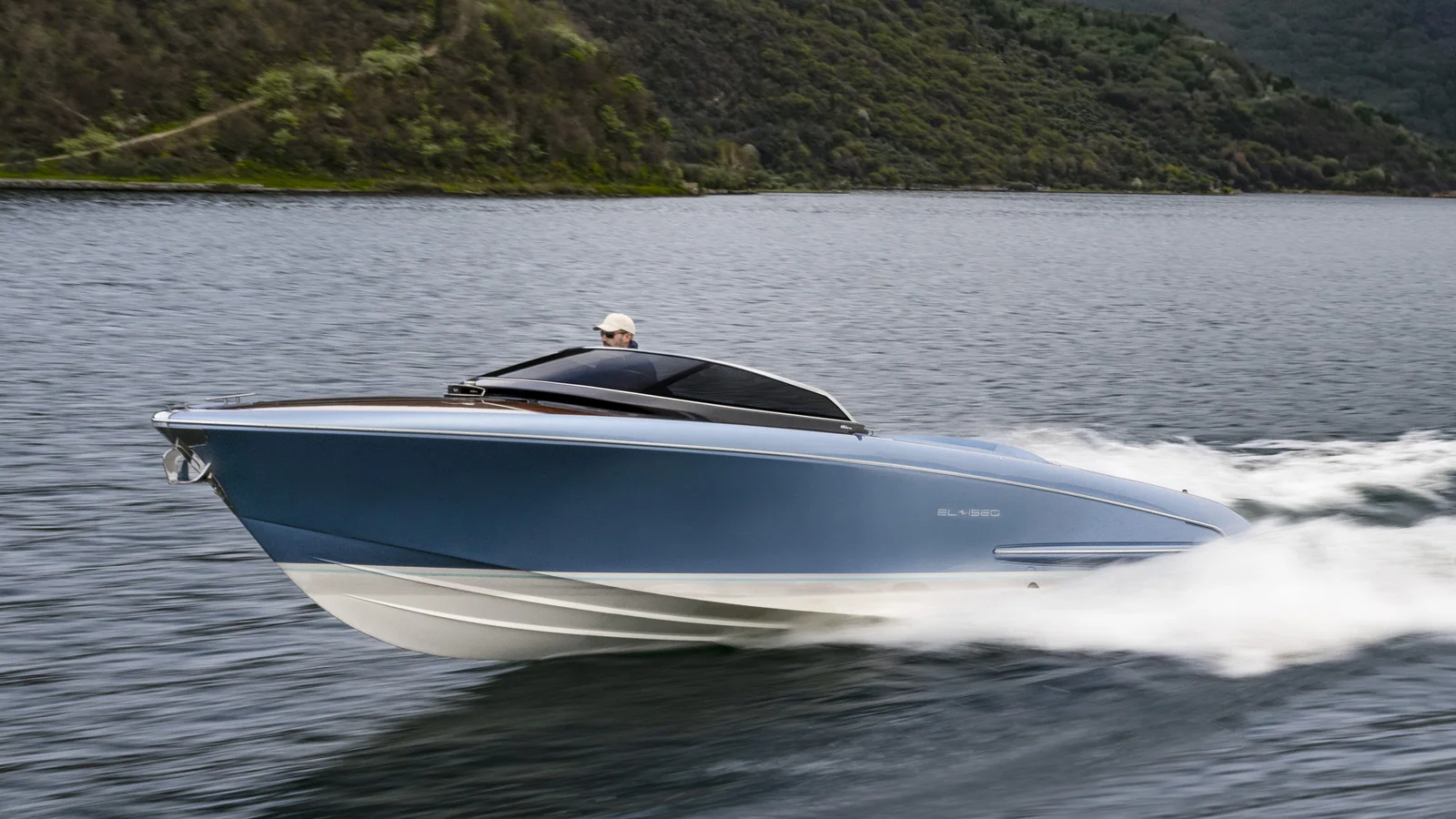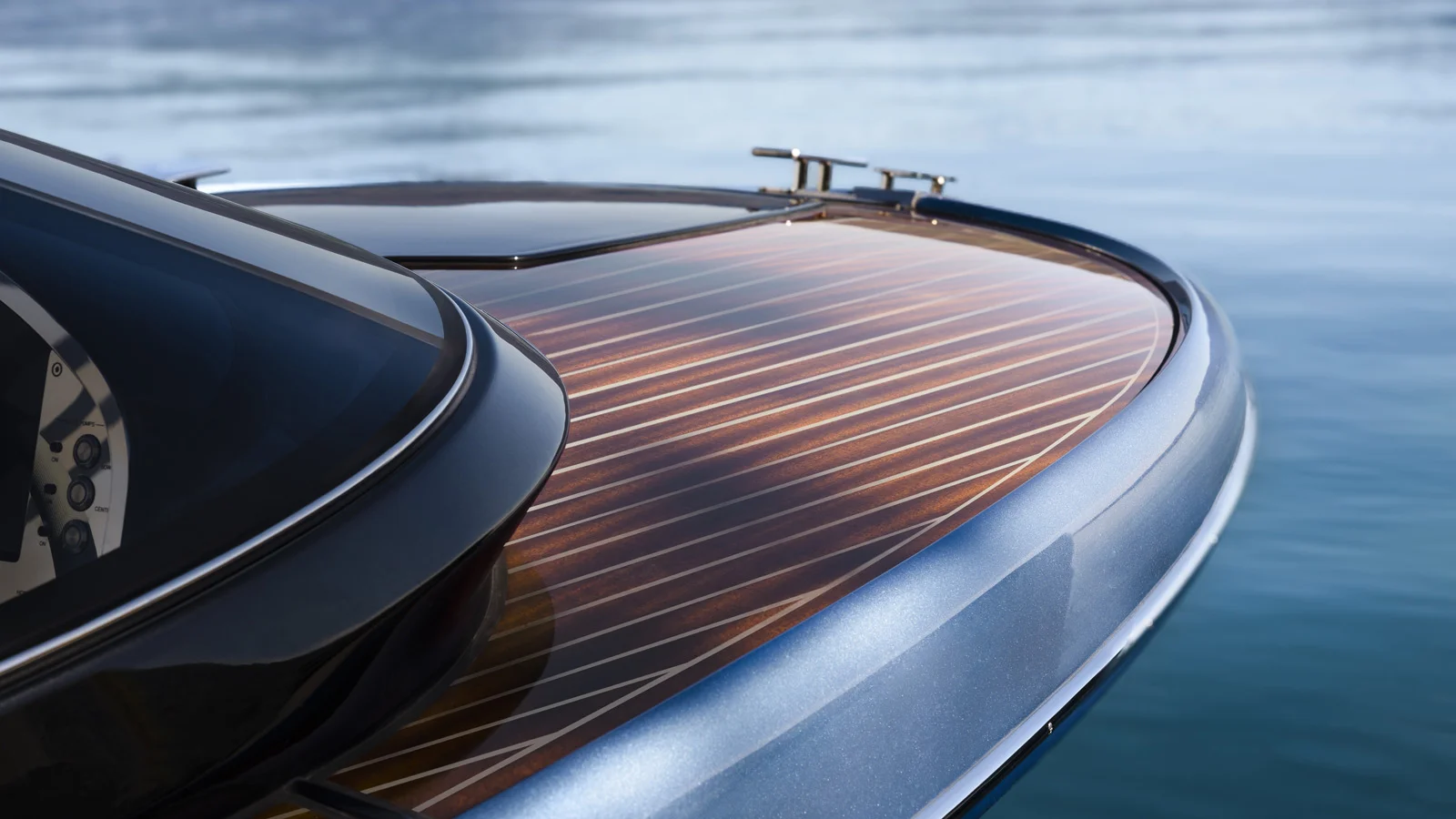El-Iseo: do people dream of electric boats?
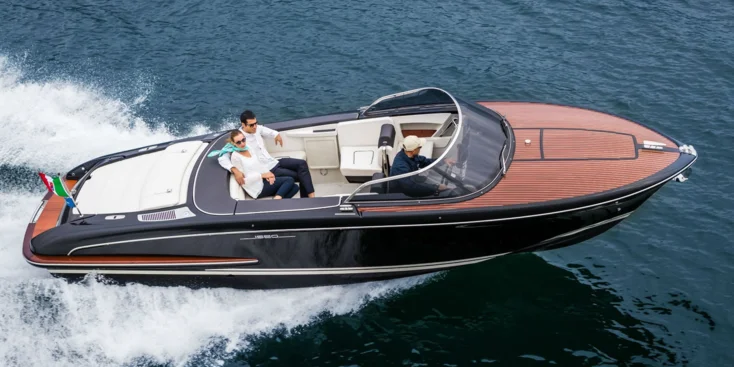
Both Italian Riva shipyard and all of Ferretti Group have big hopes for the El-Iseo, as this electric boat is not just the first electric model, but a progenitor of the E-luxury segment
The choice of the model to be electrified was obvious. The more conventional diesel-powered elder sister of the electric boat has wanted to be updated for a long time, as her premiere took place back in 2011. Despite the iconic Riva status, the yard wanted to breathe new life into it.
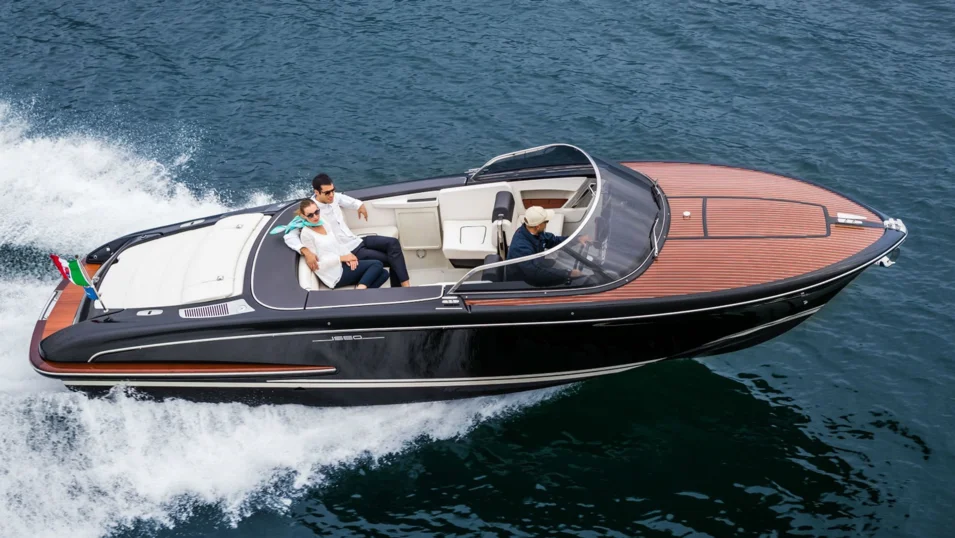
Another reason is that within the Riva range the Iseo model acted as a link between the past and future of the shipyard. She used to combine a timeless design with advanced, innovative technologies, and now she is heading towards the clean and bright electric future, where there is no place for environmental pollution and no roar of “fossil” engines.
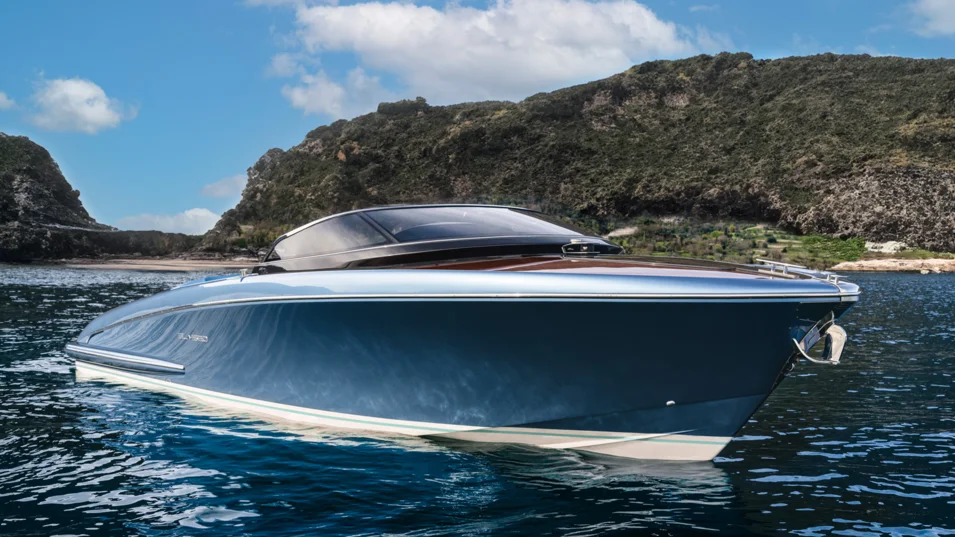
Finally, from the business and marketing points of view, it was least costly and most painless to electrify the entry level model and then “sell” the electric classics to the customers, which is quite in line with the spirit of the times and the demand for eco-friendly vessels. Partly this is exactly why the E-Luxury segment came into being, and the El-Iseo embodies its philosophy perfectly: a contemporary way of relaxing on the water must be stylish, luxurious and eco-friendly. Which also explains the high price for the boat: it has not been announced officially yet, but one can easily guess that it will be way higher than all other El-Iseo’s electric mates. Obviously Riva had to provide good reasons for that, and one has to admit, they do have them.

Outside
Despite the fact that the El-Iseo has inherited the hull with a length of 8.35 m and a beam of 2.5 m, and the main changes are rather minor, still Mauro Micheli and Sergio from Officina Italiana Design have made a number of adjustments that made the new model more contemporary. In collaboration with Ferretti Group divisions, everything excessive has been removed, the main lines and decorative elements have become simpler and more elegant. The challenge was to preserve the overall Iseo style despite all the changes, but at the same time to make it obvious that it is a different boat.
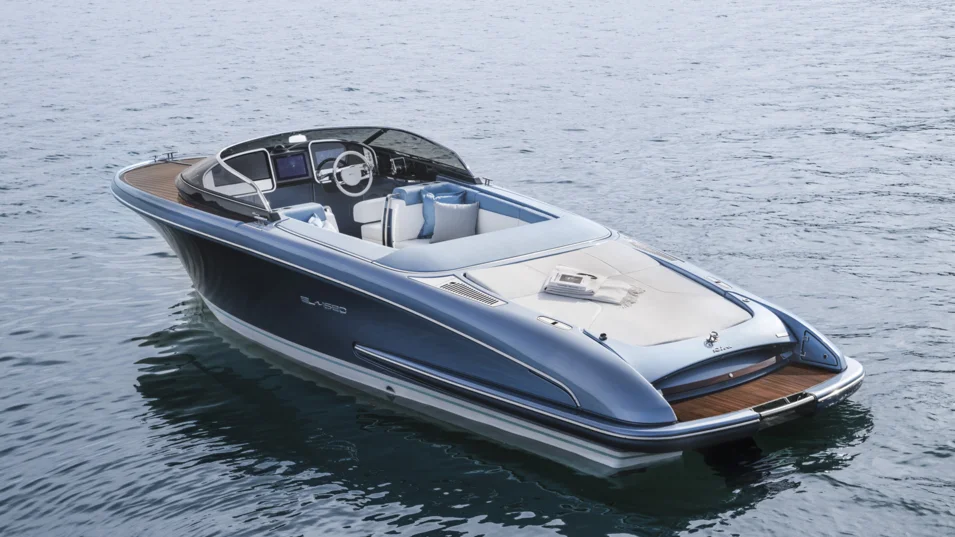
The deck, the cockpit and the helm station feature a completely new design, while the polished mahogany and the stainless steel details of the lateral grills demonstrate the “kinship” of the two models. The seats in the cockpit have been rethought, the sofa has increased and become U-shaped, so now one can lie down on one of its halves, and there is a retractable table concealed under the cushion on the starboard side, forming a dining area around it.

The futuristic dashboard stands out against the generally classic cockpit design – that is how the contrast between the tradition and modernity is created. Two touch screen displays (a 9 and 12-inch Simrad chartplotter and a 12-inch Böning) indicate all the information from the onboard systems, including the cruising mode and the battery state. The design of the steering system and its integration with the onboard systems are owed to Xenta company.

The colour chosen for the first hull is new for Riva – a California Sky Blue. It allows one to recognize the electric El-Iseo at once, and goes well with the aquamarine Riva waterline.
From the viewpoint of designer tasks, everything has been done perfectly well. Despite all the novelties, the El-Iseo is still a stylish Riva runabout, created for beautiful leisurely water trips, although the manufacturers are proud of the fact that this is the first full electric powerboat to obtain RINA B Category certification, granted to the boats designed for wind force up to 8 and a significant wave height of 4 metres and above), which is rarely granted to open type boats due to their size and configuration. However, it is very unlikely that anyone will want to check the El-Iseo in such conditions, as it was meant for a beautiful life, and not for fighting the elements.
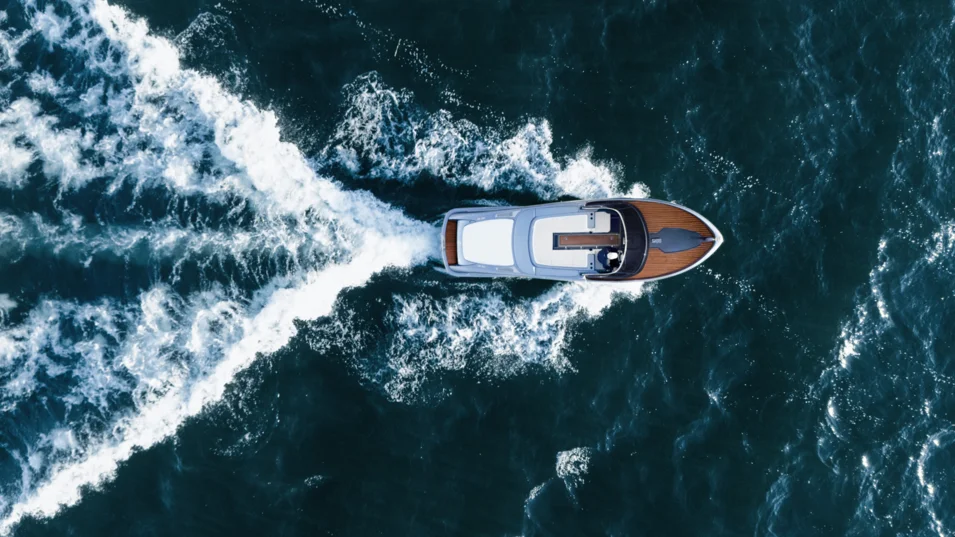
Inside
The key features of the new El-Iseo do not have to do with design, but with her technical equipment. The boat has preserved the traditional stern-drive Mercury 3XR propulsion system, and has a Parker GVM310 full-electric engine from Parker Hannifin instead of the diesel one. According to the yard, it offers “unprecedented performance”, while its acceleration curve is significantly steeper than that of a similarly sized boat powered by an internal combustion engine.

With a power output of 250 kW, peaking at 300 kW, the Parker GVM310 is capable of delivering a self-limited top speed of 40 knots, and a cruising speed of 25 knots.
The El-Iseo’s three cruising modes pay tribute to classical music: Adagio, Andante and Allegro. The slowest one is Adagio, or an eco-mode, meant for leisurely cruises in a displacement mode at a speed of up to 5 knots. The acceleration is limited here, but the fuel consumption is minimal, and, according to the yard, the range is up to 10 hours or 50 nautical miles.
The second mode, Andante, is more exhilarating. It allows one to reach a planing speed of up to 25 knots. The yard claims that in terms of speed and acceleration it is comparable to a typical yacht of a similar length with an internal combustion engine: at a speed of 25 knots you can have fun for about an hour, or up to 25 nautical miles without recharging.
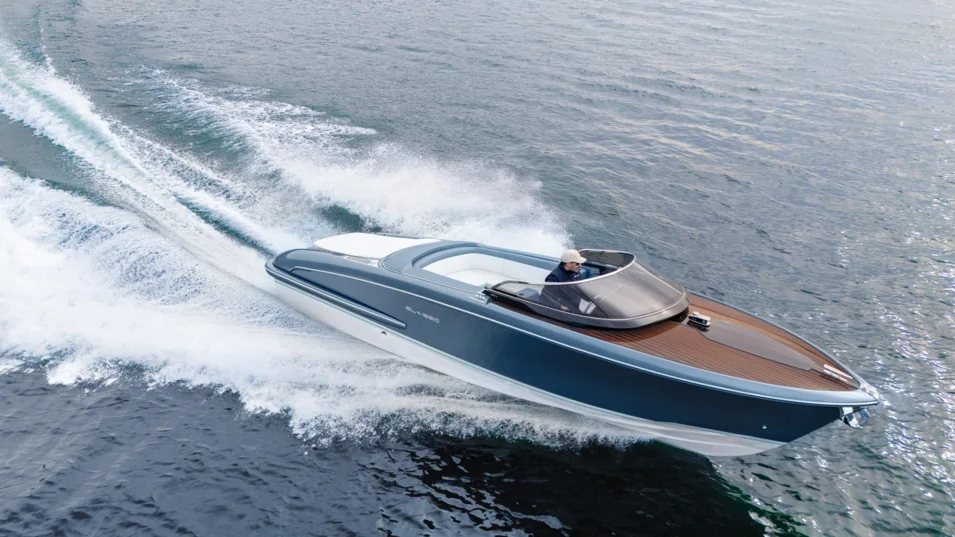
The third mode, Allegro, is a sport one. The engine is unlimited, and the El-Iseo can reach a top speed of 40 knots and demonstrates impressive dynamics. In this case the range depends on the driving style directly, i.e. on acceleration and speed.
To avoid the situation of having no fuel far from the shore, the El-Iseo is equipped with a special system that prevents this kind of trouble. When the residual charge drops to 20% and the range is of about 10 nautical miles, the boat switches to Adagio mode automatically, which allows the owner to reduce energy consumption and reach a marina or the nearest charging station.
The high-energy-density lithium battery pack for the El-Iseo was supplied by Podium Advanced Technologies. According to the yard, they are more efficient, very light and up to 10 times longer-lasting than lead-acid ones. The 150 kWt (800 V) batteries have two charging modes: normal and fast, which allows for charging from 20% to 80% in 75 minutes. The charging ports are located under the steel grille on the port side.
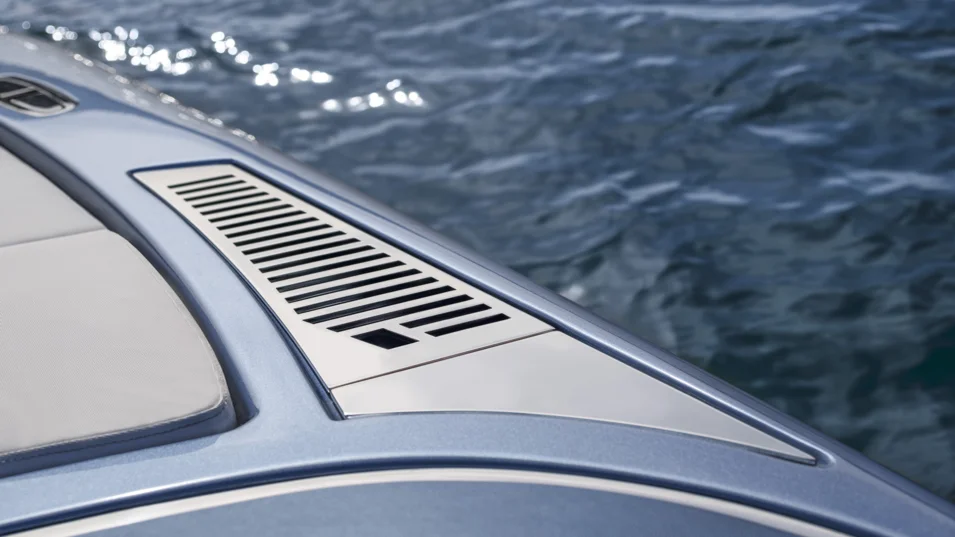
The battery pack has two independent blocks, so that even if one of them fails, the boat will go on operating. During the development of the El-Iseo, a lot of attention was paid to on-board safety. The batteries have extra thermal insulation in the form of technologically advanced cladding, made of the material with excellent fire resistance performance and extremely light weight, which is commonly used in the aerospace industry, and they are liquid-cooled, too. They are also located at the forward end of the engine room under a bimini-top compartment between the dinette and the stern sunpad, which ensures easy access and inspection. There is a special gas sensor to detect any leaks.
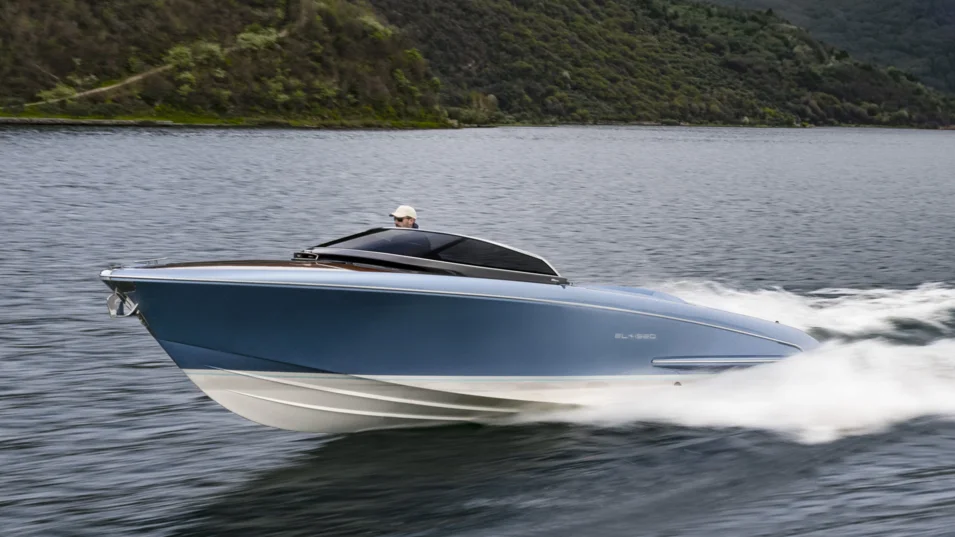
“Riva El-Iseo isn’t only the world’s most beautiful full-electric powerboat, but also proof that investing in research and development opens up new paths to sustainability and environmental awareness,” explained Ferretti Group CEO Alberto Galassi.
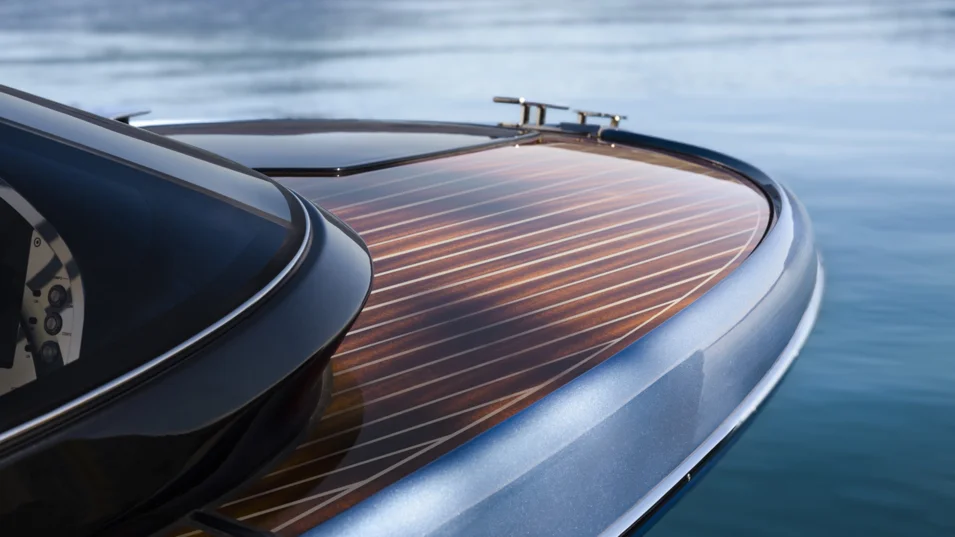
However, with all her advantages and drawbacks, there is a feeling that the El-Iseo is mainly an attempt that Ferretti Group has made to probe the market, to see how it will respond and to ask the consumers the question from the title of this article: do people dream of electric boats?
If there are enough of those who answer in the affirmative, we are very likely to see more Riva models with a prefix “El” in the nearest future.
You have successfully subscribed to our newsletter
